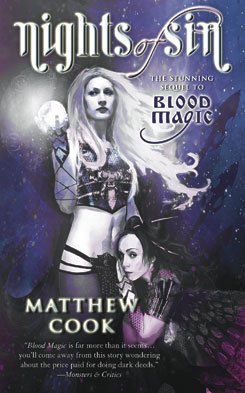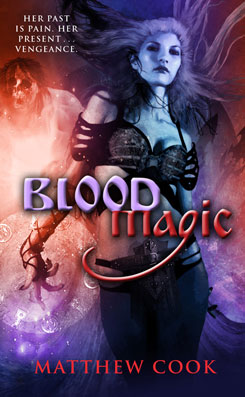
.
Welcome to my new blog feature: The Lettered Curmudgeon. Here I’ll attempt to provide my take on of recent movies, television shows and video games, as told from a writer/storyteller's perspective. This month, I’ll be reviewing Zach Synder’s visually-impressive-yet-tragically-flawed magnum opus: Sucker Punch.
If you’ve seen the previews for this film (if not, check them out here: http://www.imdb.com/title/tt0978764/videogallery), your expectations were likely similar to mine: big, over the top special effects set-pieces, full of explosions and sword fighting, served up with a healthy dose of overarching “tough chikz with gunz” sensibility. Likely, you really wouldn’t be expecting much in the way of story, or characterization, or anything approaching nuance. I certainly wasn’t, and was surprised to find something actually approaching a workable tale of sacrifice, sorrow and regret (as flawed as it eventually turned out to be—more on that in a bit) wrapped around Snyder’s highly-stylized visuals.
Sucker Punch is the story of Baby Doll (played by the fetching Emily Browning), a pig-tailed blonde who, through a series of unfortunate circumstances following the death of her mother and the accidental death of her sister, finds herself committed to a mental asylum by her abusive step-father. Daddy Dearest, you see, has a taste both for his stepdaughters’ forbidden fruit, as well for their inheritance. Baby Doll finds herself in the clutches of Blue, a corrupt hospital guard (Oscar Isaac), who has arranged for the orphaned waif to be lobotomized in five days by a visiting brain surgeon (played by Mad Men alum Jon Hamm). With Baby Doll’s memories wiped clean, Daddy-Dearest will, we assume, be left in sole control of the family fortune while she rots away, a mindless vegetable.
To escape this fate, she must enlist the help of her fellow inmates (Abbie Cornish, Jena Malone, Vanessa Hudgens, and Jamie Chung… ninja vixens, all) as well as avoid the well-meaning-yet-creepy ministrations of the staff psychologist, Dr. Gorski (played by Carla Gugono, 2009’s Silk Spectre from Snyder’s previous effort: Watchmen).
It’s here, after the film’s first 20-or-so minutes, that the narration abruptly shifts gears. The dreary hospital changes, transmogrifying into a posh night club-slash-bordello. Baby Doll’s fellow inmates are transformed from dirty, belligerent lunatics into sleek, well-fed showgirls. Each has a story to tell (or so we are told—never, unfortunately shown) via personal dances, oft-practiced (again, we are told) and performed for the pleasure of the club’s male “clients” (again … oh, you get the drift).
The bordello set-up, while intriguing, creates a separate, secondary frame for the narrative, slowing down the already-sedate pace of the film even further. We are introduced to all the primary characters a second time, this time in their more flamboyant alternate personas. Blue goes from weasel-like orderly to mustachioed pimp; Dr. Gorsky goes from psychiatrist to the club’s resident choreographer, etc.
It’s here that the film really starts going off the rails. Baby Doll we are told (again… not shown) is to be saved for the special attention of the “High Roller”,
When Baby Doll practices her moves in the club’s mirrored dance studio, the scene shifts yet again, this time to a series of bizarre fantasy vignettes, each more otherworldly and visually striking than the last. This is where the Snyder’s visual signature shines best: sword battles against 15 foot-tall robot samurai armed with chain guns… zombie Dough Boys fighting in WWI trenches against mecha battlesuits straight out of Japanese anime… B-17 bombers vs. flame-spewing dragons, dog-fighting over courtyards full of orcs and knights in armor… the action just gets more and more insane, with eras and genres blended with luscious abandon.
It’s wild, and confusing, and chaotic, and (if you’ve managed to stay awake through not one but two set-ups, remember) really needs no explanation: this is pure fantasy, as experienced in Baby Doll’s fevered (likely medicated) brain. A last-ditch attempt to save herself from a fate literally worse than death. It's a powerful metaphor, expertly crafted for maximum visual punch.
So why, then, does Snyder feel the need to explain himself and the story, as he does literally at every opportunity? Each time Baby Doll and her rag-tag team of uber-hotties are sent into another mission (each time Baby Doll dances, I mean… Snyder’s sure to show us the set-up every time without fail… more needless explaination) we’re treated to a mission briefing by the Wise Man (played by Scott Glenn), a craggy Gandalf stand-in who Snyder uses to explain the patently obvious.
“Your mission is to sneak in and kill the baby dragon… Oh, and don’t wake up Mama!” No shit, Sherlock… like I couldn't see that just by looking out the effing window. Glenn, despite a solid, likable performance, really adds nothing whatsoever to the film—honestly, it felt like the entire character was created as a result of some retarded focus-group session with a bunch of pro wrestling fans: “Um… I don’ unnerstand why pretty blonde lady is fighting them there Japanese guys… Wuzzn’t she jus’ in, like, a cathouse or sumthin’? My head hurrrrrrts!”
One of the first things any good writer learns is the almost magical power of not explaining. Of showing the reader (or, in this case, the viewer) the scene, and letting it speak for itself. Certainly Snyder’s visuals (did I mention they’re jaw-droopingly amazing? They really, really are… definitely one for my Blu-Ray want list) make things perfectly clear; having Baby Doll’s sensei/commanding officer/babysitter tell me the patently-obvious really doesn’t help. All it really does is annoy me. Over and over.
One of the hazards of spending so much time thinking about the “craft” of writing is that I find it directly lowers my enjoyment of most movies. The writing in many films (likely due to the committee-based approach of crafting story arcs via the marketing department’s need for Happy Meal and action-figure product placement opportunities) tends to create a method of storytelling that seems to feel the need to explain any challenging thought, no matter how banal it actually is, and which, in almost every instance, degrades even stories with a solid core to mere pandering.
In the end, despite all the goodwill Snyder earned for me via his powerful visual style and willingness to take ballsey chances, I was left quite literally squirming in my seat with embarrassment by midway through Sucker Punch, wondering when it would finally be over. Too bad nobody in Marketing thought to shell out a few bucks for dinner and drinks with a slush-pile first reader from even a modest genre magazine or publishing house--they would have whipped the script into shape with a few well-placed strokes of their mighty red pens.
“Stop explaining!” I fantasize they would have written in the margins. “Story begins in the wrong place!” “Prologues are boring, no matter how well written (or beautifully shot) - get to the action!” “Did I mention STOP EXPLAINING??!?!?”
Good advice, whether you’re a humble genre writer, or a mighty
Better luck next time, Zach… At least I'll buy the Blu-Ray. Damn you.
..


